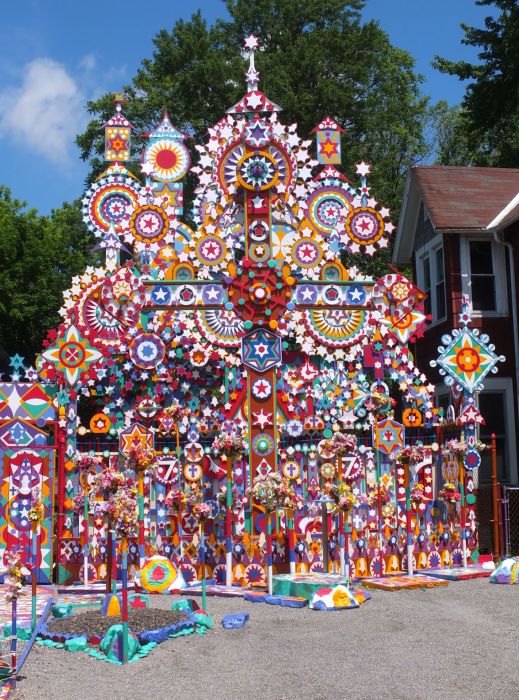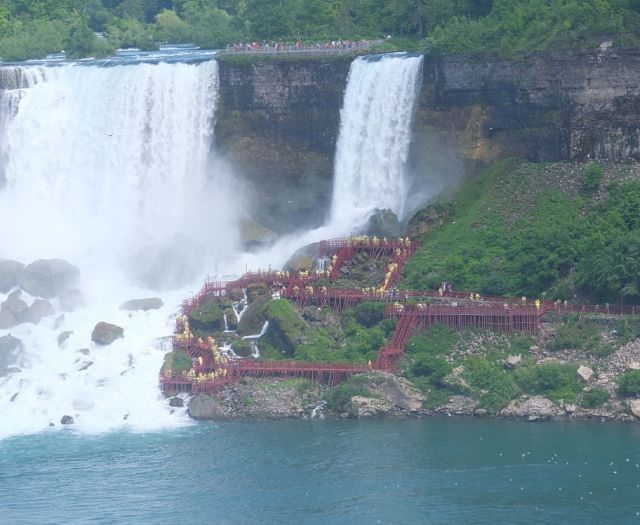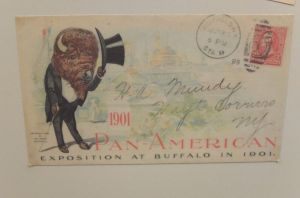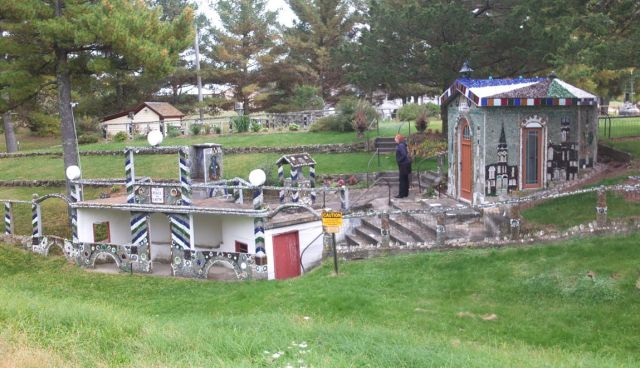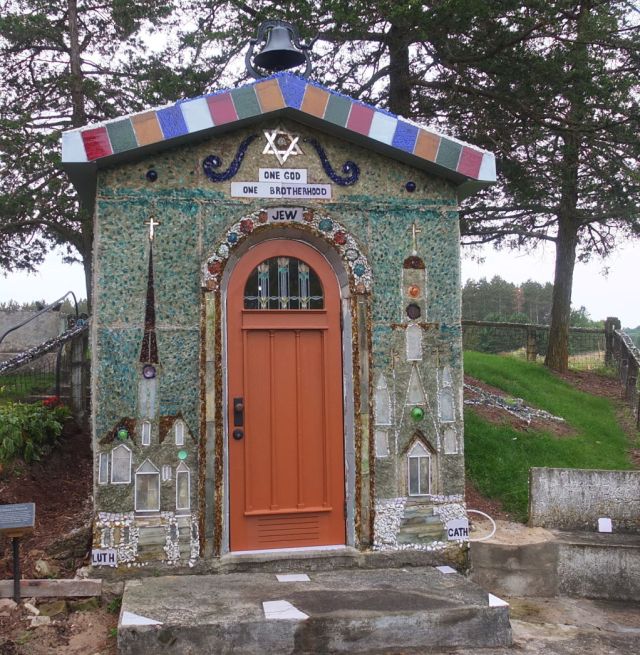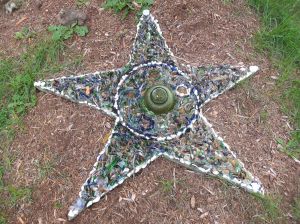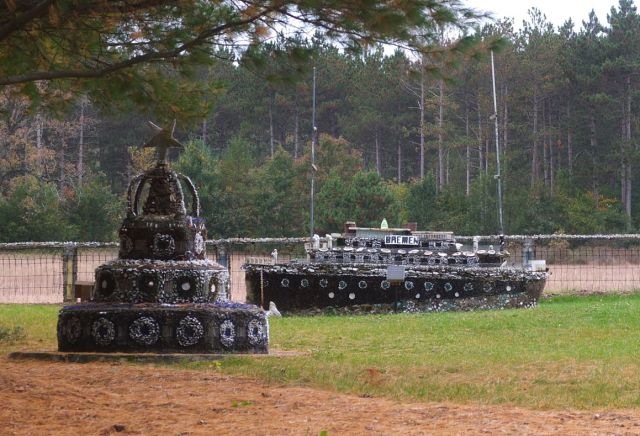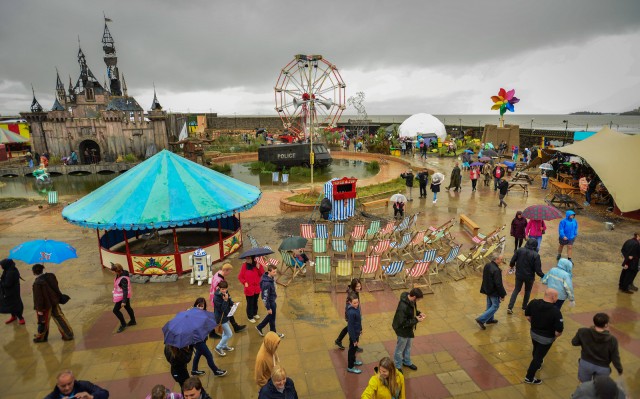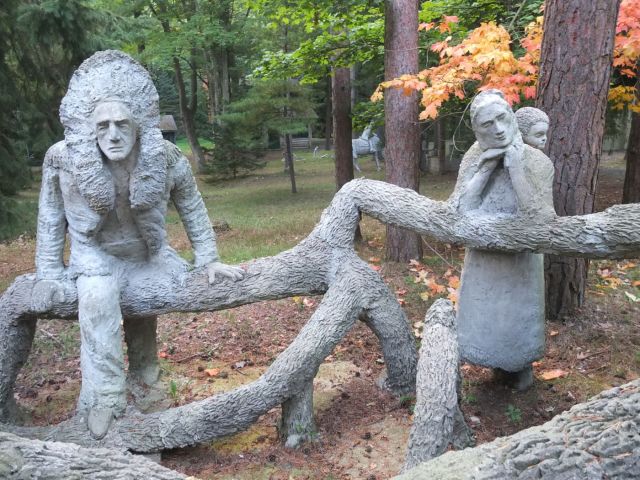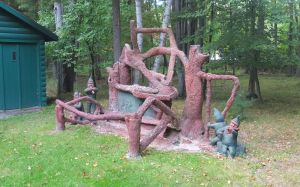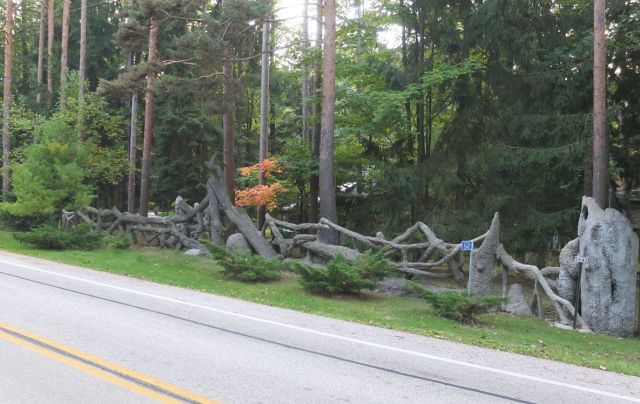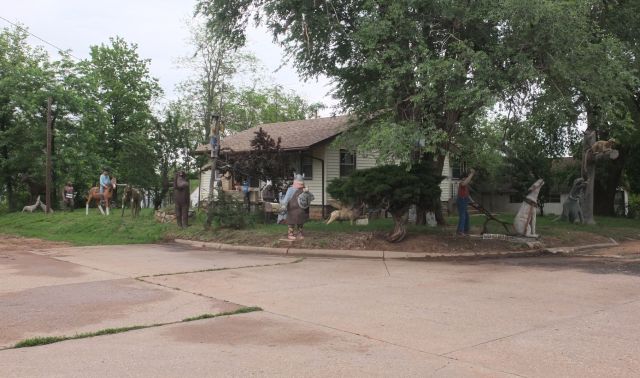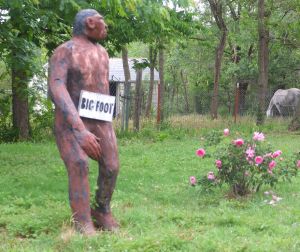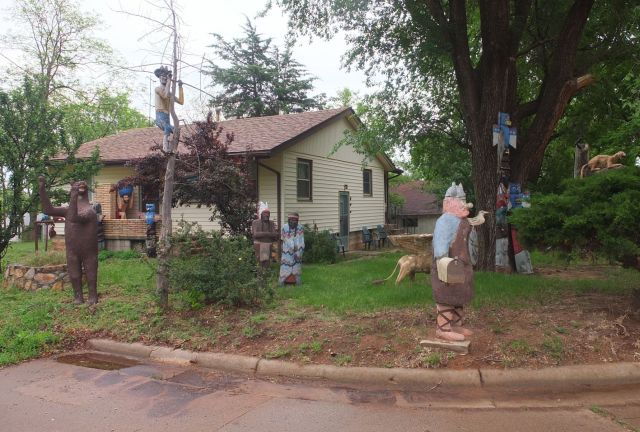
Salvation Mountain

Noah Purifoy’s Outdoor Desert Museum

Desert View Tower

Galleta Meadows

Elmer Long’s Bottle Tree Ranch

Desert Christ Park

Samuelson’s Rocks

Kenny Irwin’s Robolights
It is time to start talking about California. The Golden State has a lot of documented art environments, over 20 all told. Probably more than any other state. The vast majority of these places are located in the southern part of the state, which sucks for me, because I live in the northern part. There are a handful of terrific sites in the greater Los Angeles area, but the rest are found east of the city in the desert. Or deserts, plural, including the Mojave (high desert) and Sonoran/ Colorado desert (low desert) and the small towns scattered throughout. Basically, the eastern half of California is mostly either mountains, military bases, mines or meth-labs. In between is mostly a lot of nothing except rattlesnakes and scorpions duking it out in the empty night; meaning a lot of land for people to build whatever strikes their fancy without their neighbors kvetching.
The summers in the desert are brutal, with most days over 100 degrees. The nights not much better. It takes a certain ruggedness to live in these areas (except for perhaps Palm Springs, which is a beautiful resort town with amazing architecture and lots of swimming pools). This area is fan-fuckin’-tastic! I absolutely love this part of the country. I would move here in a heartbeat if we could just dim the Sun a bit in the summer (I am a giant baby when it comes to weather). For as barren as the desert is, it is all that much more spectacular, as the ratio of coolness and weirdness is off the charts.
So, the California desert art environment trail is roughly 250 miles and you could probably comfortably hit all nine spots in a long two to three day weekend. San Diego, Los Angeles, or Palm Springs all make great launching pads. But for the ultimate experience I say shack up in the city of Joshua Tree. There is so much to see and do in the area beyond these nine art environments that that it is probably best to just move out here, buy a yurt and slowly take it all in. Eventually, I will have longer posts to go into more detail about the sites and all the other cool non-art environments in the neighborhood, but for now, here is a little overview.
Starting from the north and heading south.

Elmer’s Bottle Ranch – 24266 National Trails Hwy, Oro Grande, CA
Elmer Long built his bottle tree ranch to showcase the 1000s of bottles that he and his dad had collected for years. This site is located along the Mother Road – Route 66, between Victorville and Barstow. Bottle Trees are long metal poles with shafts sticking out, with a beer or soda pop bottle resting on the metal branch. I initially was not all that excited to visit the ranch as I have seen bottle trees before, but man-o-manoshevitz, this place is great. There are a few hundred bottle trees, creating a dense glass forest. There are no set hours and from what I have read, it is open if the gate is open, but I get the impression it is open pretty regularly. There is a donation box.
 Noah Purifoy’s Joshua Tree Outdoor Museum – Joshua Tree, CA (email the foundation for the exact address)
Noah Purifoy’s Joshua Tree Outdoor Museum – Joshua Tree, CA (email the foundation for the exact address)
In the late 1980s Noah Purifoy (1917-2004), moved to the town of Joshua Tree in the high desert to create his masterpiece. Purifoy would not fall into the “self-taught” category. He was a working artist, who had exhibited his assemblage artworks at museums and was actually a founding director at the Watts Tower Art Center in Los Angeles, making him no stranger to art environments. His museum covers several acres and is chock full of various sculptures made from found materials either from around the area or brought to him by visitors. This is a great site. It is open 24/7, but the foundation that cares for the site does ask that you make an appointment. Check out their website and shoot them a quick email and they will send you the exact address.
 Desert Christ Park – 56200 Sunnyslope Drive, Yucca Valley, CA
Desert Christ Park – 56200 Sunnyslope Drive, Yucca Valley, CA
Next to a church, the sculptures, as the name implies, are all biblical. Frank Antone Martin created them in the 1950s. Created from concrete and steel, covering various scenes from the good book, this site is open daily from dawn to dusk and is only about a 20-minute drive from Noah Purifoy’s museum. These two sites and Samuelson’s rocks are in the same general area, the high desert. Check out their website here.
 Samuelson’s Rocks – Located in Joshua Tree National Park
Samuelson’s Rocks – Located in Joshua Tree National Park
John Samuelson, a Swedish immigrant, lived and worked in the desert in the 1920s in what is now Joshua Tree National Park. Samuelson carved his political/ philosophical ramblings on eight boulders around his homestead, which at the time was in the middle of nowheresville. This place is a true joy to visit, first off, it is a about 1.5 miles off any roads in the park so you have to hoof it (over pretty flat ground, but nonetheless). Then you find a little hill covered in boulders (if you don’t get lost and fall in quicksand first) and then you have to wander around looking for all eight carved rocks. I am typically not the outdoorsy type, but I absolutely love Joshua Tree Park. The Park is open 24/7. The rocks are a bit tricky to find. Bring lots of water, a compass, and some chupacabra repellent.
Next week I plan to write a longer entry about Samuelson’s Rocks and will include directions, so please be patient.
 Cabot’s Pueblo – 67616 Desert View Ave, Desert Hot Springs, CA
Cabot’s Pueblo – 67616 Desert View Ave, Desert Hot Springs, CA
From Samuelson’s Rocks, you head south into the low desert (or “down below” as residents of Joshua Tree/ Yucca Valley call it). Here, in Desert Hot Springs, just north of Palm Springs, Cabot Yerxa, staring in 1941, built his home in the manner of a Hopi-inspired pueblo. One thing, which I will jaw on about in a future post, is a that a lot of early folk art environment academia (which basically started in the late 1960s) dealt with art environments that were actually unique homes, hand-built built by a single person. I think the days of the folk art architect are over. Building codes are just too strict and you can’t really get away with just constructing a house whatever way you see fit. Almost all the art environments built in the later part of the 20th century up to now are typically sculptures crafted outside the house. Sometimes rooms are gussied up, but I think the days of an untrained builder with no blueprints creating their personal domicile are over. Cabot’s Pueblo is open to the public for tours, check out their website for hours.
 Robolights – 1077 E Granvia Valmonte, Palm Springs, CA
Robolights – 1077 E Granvia Valmonte, Palm Springs, CA
Located in an affluent neighborhood in Palm Springs, Kenny Irwin now in his early 40s has been building amazing robots in his parent’s yard for decades – since he was a kid. What is most shocking about Irwin’s art is its location. Most art environments are found in the boonies, or if they are in a city, they are usually in more impoverished neighborhoods. Irwin’s yard is in a really nice part of town, only a block from what was once Frank Sinatra’s desert retreat/orgy pit.
This is a true fantasy world. Walking into his yard you are surrounded by giant monochromatic robots and assorted space creatures cohabitating peacefully in a winter/ Christmas themed universe. This place is awesome, fascinating, chaotic, totally unreal and unexpected!
Annually, Irwin opens his yard evenings around Christmas time for a holiday themed robot lightshow, thus the name Robolights, open during the Christmas season. Also, you can visit the site throughout the year with an appointment by calling 760-320-1500. When I texted him he replied the same day inviting me over. He does ask for a meager $5 donation to help with upkeep. As always, be respectful this is private property.
Update: July 2016, Kenny is having major issues with the city of Palm Springs and currently they are not allowing him to have visitors and the annual Robolights show may stalled out. The best source of info seems to be his Facebook page, which you can reach here. So check out his site before rushing over there.
 Galetta Meadows- Sculptures by Ricardo Breceda – Located throughout Borego Springs, CA
Galetta Meadows- Sculptures by Ricardo Breceda – Located throughout Borego Springs, CA
Sculptor Ricardo Breceda was commissioned by Galetta Meadow’s landowners to create these pieces and thus to me it does not exactly conform to the art environment definition. However, other people do list this site alongside other art environments, so who am I to argue. There are over 130 sculptures littering the sand over a rough 10-mile area. This is another great one folks, (I fear that I am being overly gushy in this post, but seriously half of these desert sites are my among my absolute favorite art environments/ places in this world). The town of Borrego Springs is completely surrounded by Anza-Borrego Desert State Park. An attraction does not have to be remote to be cool, but it helps and it is pretty awesome to drive for miles through the desert void to then stumble across a metal zoo. Once you get here be prepared to be amazed. Breceda’s statues are mostly of critters that you can find in the desert today (horses, scorpions), or critters from desert days past (dinosaurs, woolly mammoths, dragons).
There is a map on the official website, showing the location of all the sculptures. You can also purchase guides and maps in town, or on Amazon.com before you hop on your pack mule. Most of the pieces are found off Borrego Springs road.
 Salvation Mountain – Niland CA
Salvation Mountain – Niland CA
Salvation Mountain is perhaps one of the most famous of America’s art environments and it is easily the most crowded one I have ever visited. The acclaim is deserved; it is one of the world’s greatest visionary art environments. Leonard Knight (1931-2014), literally built a rainbow mountain out of hay, adobe and thousands upon thousands of gallons of paint in no-man’s land, not far from the Salton Sea (a very strange part of the country). It is unique, upbeat and positive. While it is overwhelmingly Christian, with a large cross and the words, “God is Love” emblazoned on the mountain, Knight was non-denominational in his beliefs. No dogma. Churches and other religious groups had tried to buy or co-opt the site and Knight always turned them down, as he felt that the site is his own personal beliefs and is meant to be viewed, shared and enjoyed by everyone. Knight passed away in 2014 and now volunteers and a non-profit organization have kept the thing going against all odds. It is free to visit, but donations are appreciated. Open daily, from dawn to dusk.
 Desert View Tower and Boulder Park – In-Ko-Pah Rd, Jacumba, CA
Desert View Tower and Boulder Park – In-Ko-Pah Rd, Jacumba, CA
Here you get a twofer. First, a classic tourist attraction/ rest stop, the Tower, built between 1922 and 1928 developed by Bert Vaughn, built along the interstate route between San Diego and Phoenix, AZ. The Tower is an old school attraction and gift shop where the selling point is the amazing view from the top. And next to that is an art environment, the Boulder Park, which was built in 1933 by an itinerant out of work engineer named Merle Ratliff, who carved several of the boulders to look like animals and skulls. You pay your admission at the Tower and then you can go scrambling about through Boulders. There is a small charge, but it is well worth it. The Tower is open most days, but I recommend calling (619) 766-4612 to confirm they will be open.
So take care, polar bears. Time to get some sun.
























